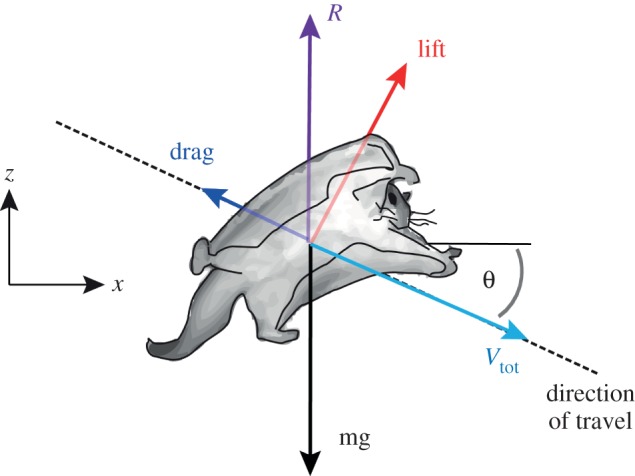Figure 1.

Schematic of an animal gliding at equilibrium. The light blue arrow indicates net velocity and the other arrows represent forces. As a gliding animal moves though the environment, it generates a lift force, L, perpendicular to the direction of travel, and a drag force, D, opposite to the direction of travel. These two sum to produce the resultant aerodynamic force, R, which, in general, acts in opposition to the animal's weight, mg. For equilibrium glides, R points in the vertical direction (z), and its magnitude is exactly equal to body weight (mg). The glide angle, θ, is the angle between the direction of the travel and horizontal (x). (Online version in colour.)
